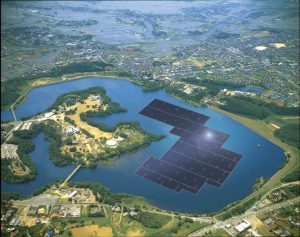 The next innovation in solar power capture is
The next innovation in solar power capture is here there:
But floating solar arrays are becoming more popular, with installations already operating in Australia and the United States, and more planned or under construction.
The growing interest is driven in part by huge growth in the solar market in recent years as the cost of the technology has dropped quickly.
Floating solar arrays — they are often referred to as “floatovoltaics,” a term trademarked by one company — also have advantages over solar plants on land, their proponents say. Renting or buying land is more expensive, and there are fewer regulations for structures built on reservoirs, water treatment ponds and other bodies of water not used for recreation. Unlike most land-based solar plants, floating arrays can also be hidden from public view, a factor in the nonprofit Sonoma Clean Power Company’s decision to pursue the technology.
The floating arrays have other assets. They help keep water from evaporating, making the technology attractive in drought-plagued areas, and restrict algae blooms. And they are more efficient than land-based panels, because water cools the panels.
“The efficiencies are what motivated us to look at this,” said Rajesh Nellore, the chief executive of Infratech Industries, which has completed the first section of a floating solar plant in Jamestown, Australia, that will eventually cover five water treatment basins.
And evidently, fish love them. The anti-evaporation properties alone are the worth the ticket. Plus: energy. Let’s rip up the freeways, build spill ways and fill ’em up with PV cells.
